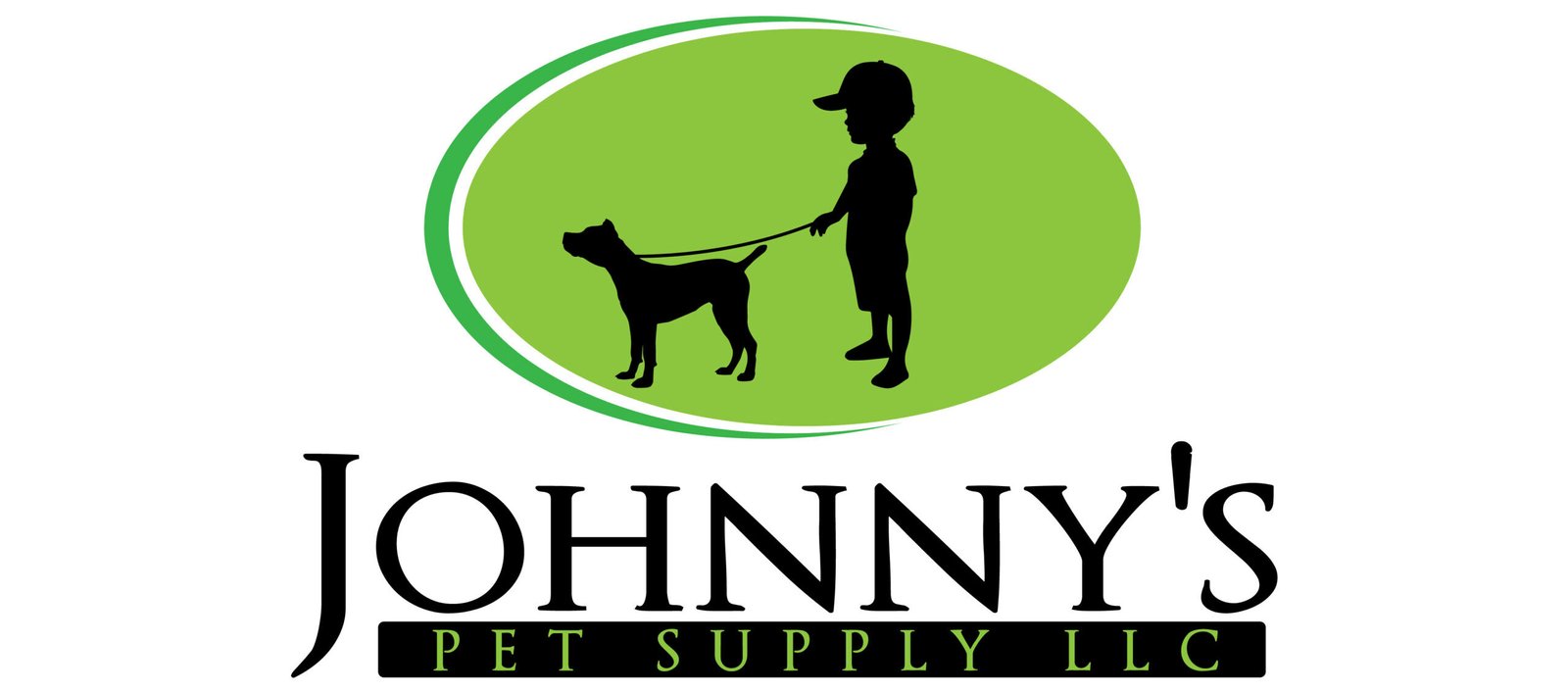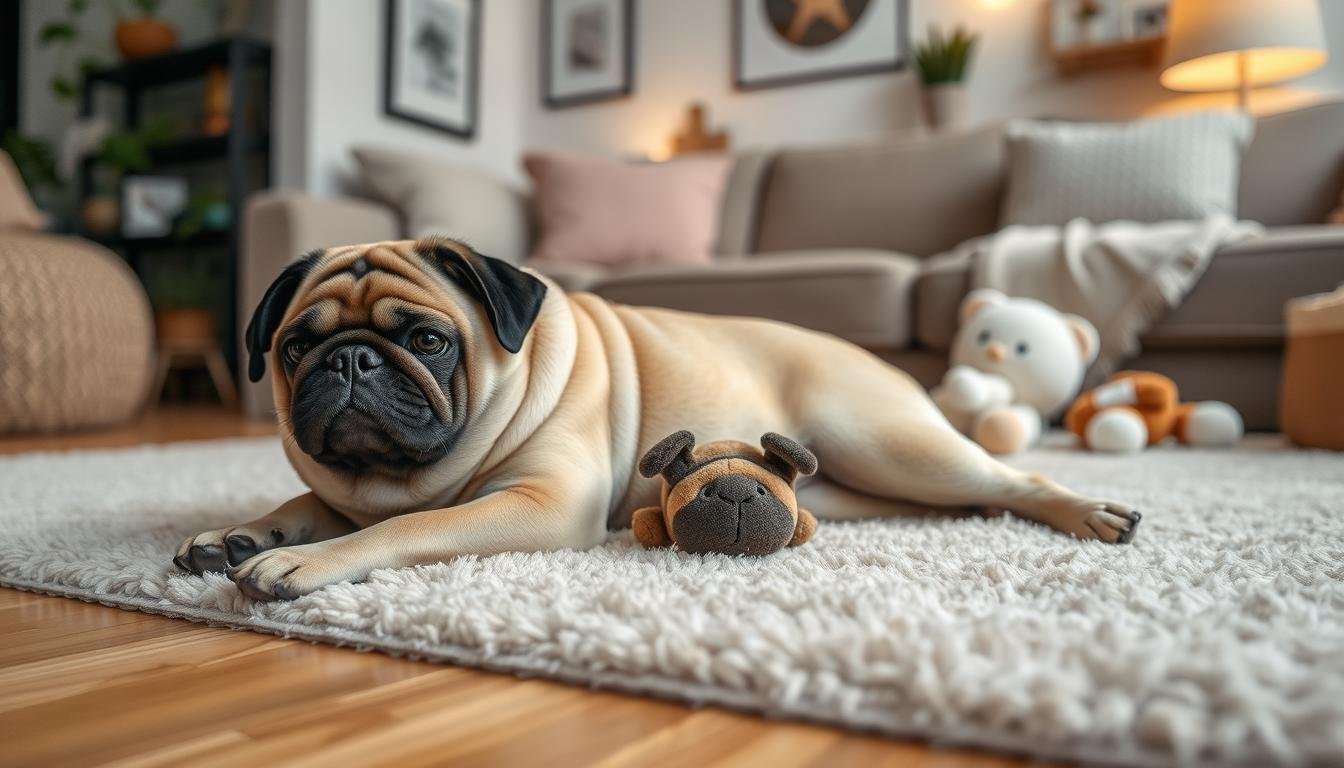How to avoid overexcitement when guests visit your Pug
Pugs are known for their excitement and energy. This can be a problem when guests come over. A study showed that 78% of Pug owners struggle with their dog’s excitement during parties.
But, with the right training and preparation, you can teach your Pug to be calm and polite. This way, you can enjoy hosting without worrying about your dog’s behavior.
This guide will help you manage your Pug’s excitement and make social gatherings better for everyone. You’ll learn how to understand your Pug’s feelings about visitors and use training to help them behave well. By following these tips, you can create a welcoming space where your Pug can greet guests with confidence.
Understanding Your Pug’s Perspective on Visitors
As a Pug parent, it’s key to see things from your furry friend’s point of view when guests come over. Pugs are known for being lively and loving, but new visitors can upset their routine. This can make them too excited.
Guests as a Break in Routine
Pugs love a routine that’s the same every day. When guests arrive, this routine gets broken. This can make them anxious or too excited. They might bark a lot, jump up, or even not want to say hello.
Perceiving Guests as Friends or Trespassers
How your Pug sees guests depends on their personality and past experiences. Some Pugs love making new friends, while others might be shy or protective. Knowing how your Pug views visitors helps you handle their behavior better.
About 65% of dog owners struggle with their dogs respecting personal space. They need help teaching them to behave properly.
By understanding your Pug’s feelings, you can make them feel safer and more at ease when guests are around. This helps avoid bad behavior and makes sure everyone has a good time.
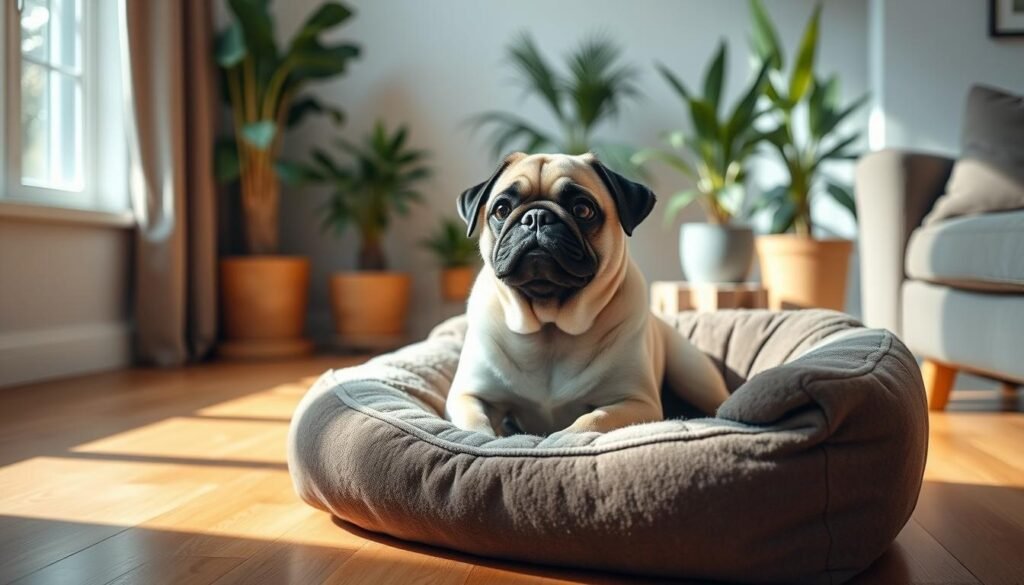
Training Tune-ups for Calm Behavior
Before guests arrive, it’s important to practice your Pug’s basic obedience skills. Teach them to sit, stay, and come. This practice, especially at the front door, helps them stay calm and obedient. Also, teach them not to rush through open doors for better door manners.
Regular dog training and socialization are crucial. They help your Pug greet guests right. With these training tune-ups, your Pug will learn to handle the excitement of visitors calmly.
Practicing Obedience Skills
Begin by strengthening your Pug’s basic commands like sit, stay, and come. Practice these near the front door. This helps them stay calm and focused, even with distractions.
Teaching Door Manners
- Teach your Pug not to rush through open doors, whether guests are coming or going.
- Practice having your Pug sit and wait patiently while you open the door. Reward them with treats and praise for calm behavior.
- Slowly increase the wait time to help your Pug control their excitement.
Consistent training and positive reinforcement are essential. They help your Pug develop the calm behavior needed to greet guests well.
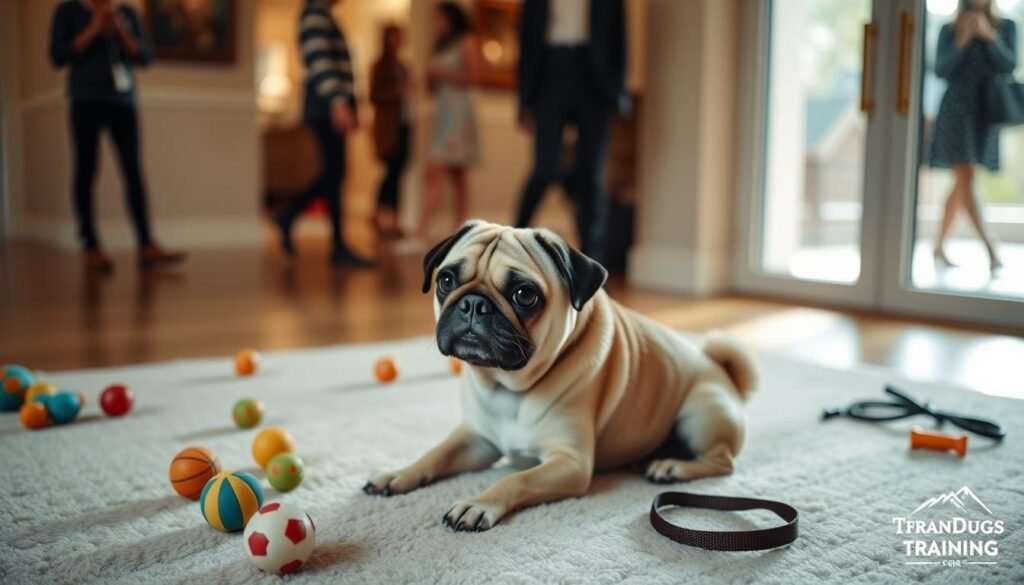
How to avoid overexcitement when guests visit your Pug
Welcoming guests into your home is exciting for you and your Pug. But, it’s important to manage your Pug’s excitement to make sure everyone has a good time. Understanding your Pug’s nature and using good training can help them stay calm when guests arrive.
Pugs get excited because they love people and enjoy new things. To keep them calm, teach them to be social and use positive training. This helps them stay calm and focused when guests come over.
- Practice obedience commands like “sit,” “stay,” and “settle” to help your Pug relax and focus when guests are around.
- Teach your Pug door manners so they don’t jump up or bark too much when guests arrive.
- Slowly introduce your Pug to new people and situations. Reward them with treats and praise when they behave well.
By managing your Pug’s excitement and making them comfortable with guests, you create a welcoming space for everyone. Remember, training your Pug takes time and patience. It helps them control their excitement and stay calm when guests visit.
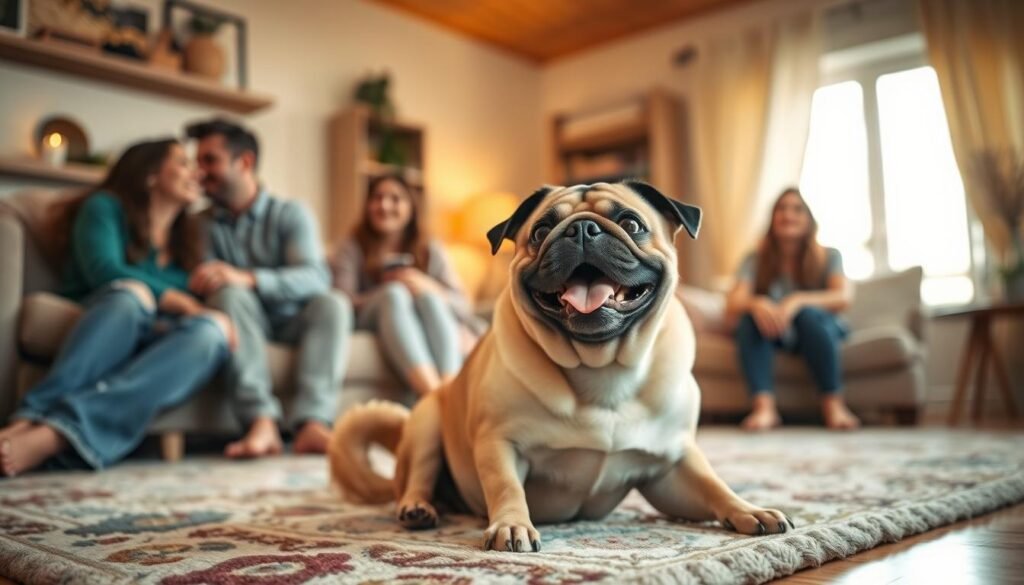
“Overexcitement in dogs can lead to aggressive behavior towards other animals or people.”
Using these strategies and creating a calm, positive environment helps avoid overexcitement. This way, your Pug and your guests can enjoy a pleasant and stress-free time together.
Gradual Exposure and Positive Reinforcement
Helping your Pug feel at ease with guests is key to avoiding overexcitement. Start by gradually introducing your Pug to visitors. This lets them get used to new people at their own pace. At the same time, praise and reward them for being calm and polite.
Involving Helpers in Training
Get friends, family, or dog trainers to help with your Pug’s training. They can interact with your Pug in a safe way. This lets your pup practice saying hello to strangers without getting too excited.
Give your Pug treats or praise when they act calm around these helpers. This positive feedback helps them learn to stay calm around others.
Rewarding Calm Behavior
- Give your Pug treats, praise, or their favorite toys when they stay calm during a visit.
- This positive feedback encourages them to stay calm more often. It helps them avoid getting too excited.
- Slowly ask your Pug to stay calm for longer before rewarding them. This helps them learn to stay calm for longer periods.
Using gradual exposure and positive reinforcement helps your Pug become more relaxed and friendly with guests. This method not only lowers the chance of overexcitement but also helps your Pug develop good habits for the long term.
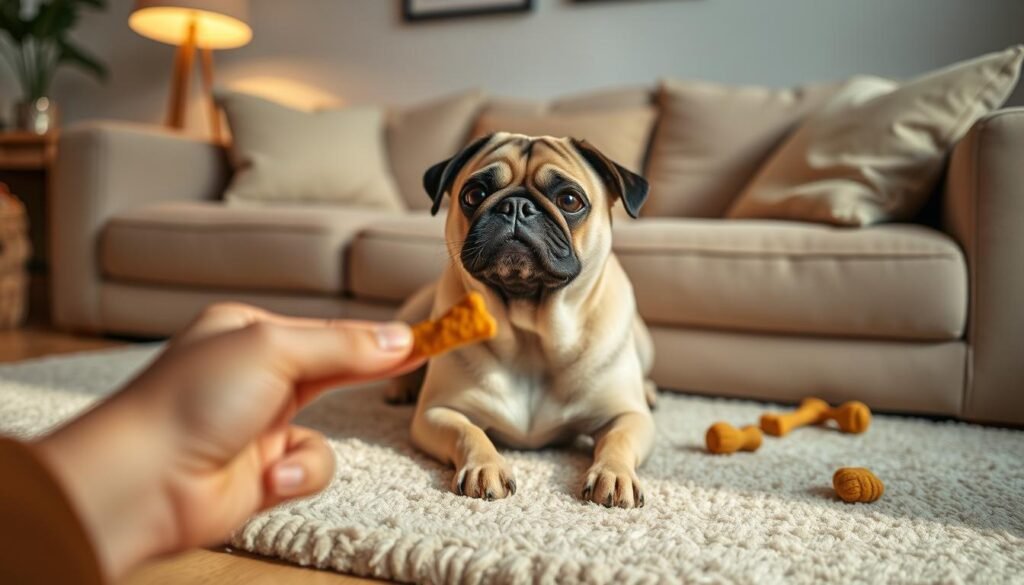
“Positive reinforcement is the key to training a well-behaved Pug. By rewarding calm behavior, you’re encouraging your pup to repeat the desired actions, rather than punishing excitement, which can often backfire.”
Managing Overexcitement with Time-outs
Even with careful training, your Pug might still get too excited when guests arrive. It’s important to have a plan to handle this. Giving your Pug a “time-out” in a calm spot, like their crate or a separate room, can help them calm down.
Time-outs are not a punishment. They’re a way to give your Pug a break and let them calm down on their own. This method is great for dealing with issues like jumping up and pulling on the leash. Being patient and consistent is crucial.
Managing your Pug’s excitement is a long-term effort. It may take time for them to learn to control their impulses. By using time-outs as part of their training, you can teach them to stay calm, even when there’s excitement around.
